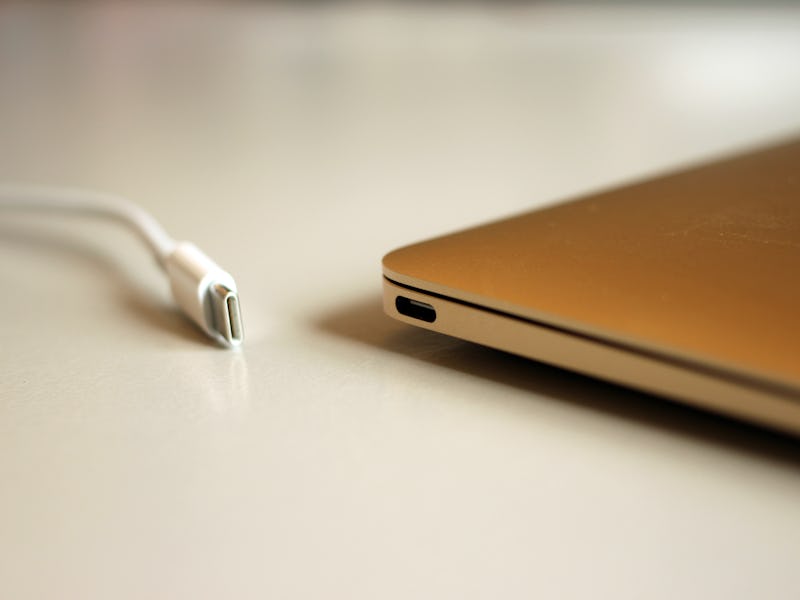USB-C: why old cables are being relegated to the trash can of history
The cable to end all cables?

Buyers of Apple’s newest iPhones may have been left in a state of confusion. When the devices hit stores last month, there was a quiet divide between models: the $699 iPhone 11 came with a standard USB cable, while the $999 iPhone 11 Pro and $1,099 iPhone 11 Pro Max came with a USB-C cable.
It doesn’t stop there. The MacBook Pro uses a USB-C connector, but the Mac Pro offers both USB-C and USB. The iPad Pro has a USB connector, but regular iPads use a third connector called Lightning. The iPhone uses Lightning, but the muddled box fiasco shows the other end of the cable might come with USB or USB-C. On the Android side, many flagship phones use USB-C on the device itself.
So what gives? Apple is just one example of how the tech industry tried to solve a problem of multiple standards, only to confuse things further by introducing a new “universal” standard. It’s a story that’s occurred so often with other standards that webcomic xkcd even captured the phenomenon.
For some, USB-C is the solution to a major problem that could reduce waste, simplify connections and make plugs both smaller and reversible. For others, USB-C is a weirdly-shaped new plug that arrived on their latest smartphone, which means they have to get new cables for yet another connector.
As smartphones and the industry as a whole gradually shifts to USB-C, the teething problems are likely to stay for some time.
The iPhone 11 Pro comes with a USB-C cable.
USB-C: what is it?
USB, short for Universal Serial Bus, was established in 1996 as a new standard for connecting hardware to computers. Before, it was common for computers to use different-shaped plugs for printers, mice, keyboards and video game controllers. USB offered clear benefits, but one of the big drivers of USB adoption was — yep, you guessed it — Apple, which shipped its iMac in 1998 without any of those older connections, depending entirely on USB.
The original spec actually described two different plugs. The type-A plug is the one most people are familiar with, while the type-B plug was designed to attach to the peripheral itself. The type-B plug was slimmed down in a new mini-B spec introduced in 2000, enabling connections to digital cameras. It was slimmed down again in 2007 into the micro-B connector common on many Android-powered smartphones.
USB-A to micro-B.
It’s here that things start to get a bit complicated. As the smartphone developed, it grew from a gadget that plugs into a computer to a gadget that takes input from other gadgets. Similarly, the computer slimmed down to the point where the line started to blur between computer and gadget.
The answer, finalized in 2014, was type-C. This was designed for both host and peripheral, with a small size similar to micro-B. Laptops could now slim down further, while smartphones could connect directly to gadgets using the same cable for both. It could also support new specs like Power Delivery, which would provide enough power to replace a laptop’s charging port, and video output that could even eliminate a separate HDMI port.
Five years later, and it’s been a tough transition.
USB-C: why is it so confusing?
There are a few reasons why moving to USB-C has been painful:
- Everyone is used to the old connectors. Consumers have stocked up on nearly 20 years worth of USB cables.
- It’s meant to be a single-cable solution, but the standards are messy. Some cables support the Power Delivery spec that enables superfast charging, others don’t. Some support data speeds around USB 2 levels, others at USB 3, others at supercharged Thunderbolt rates. Some ports can support HDMI display output, others can’t. In short, just because you see a USB-C connector, doesn’t mean that the ports, cable and gadgets at either end support what you’re trying to do.
- Because of the above, USB-C’s main selling point has been undermined. In many ways, it’s harder than older USB to understand.
IHS Markit claims that USB-C could reach around five billion global units by 2021. But for the cable to end all cables, it’s been a muted launch.
A OnePlus USB-C cable.
USB-C: what happens now?
A new standard is on the way!
USB4, announced in September, promises speeds of up to 40 Gbps. It also includes support for Thunderbolt 3 directly out of the box, which should make connecting to screens and other peripherals a bit more straightforward. It’s expected to start showing up on gadgets toward the end of next year.
Unfortunately, as you won’t be able to tell by looking at the connector whether a USB-C port is built to the USB4 spec, it’s unlikely the confusion will end soon. For now, expect a slow march toward a more unified connector, which one day could filter to enough gadgets to make connections simpler.